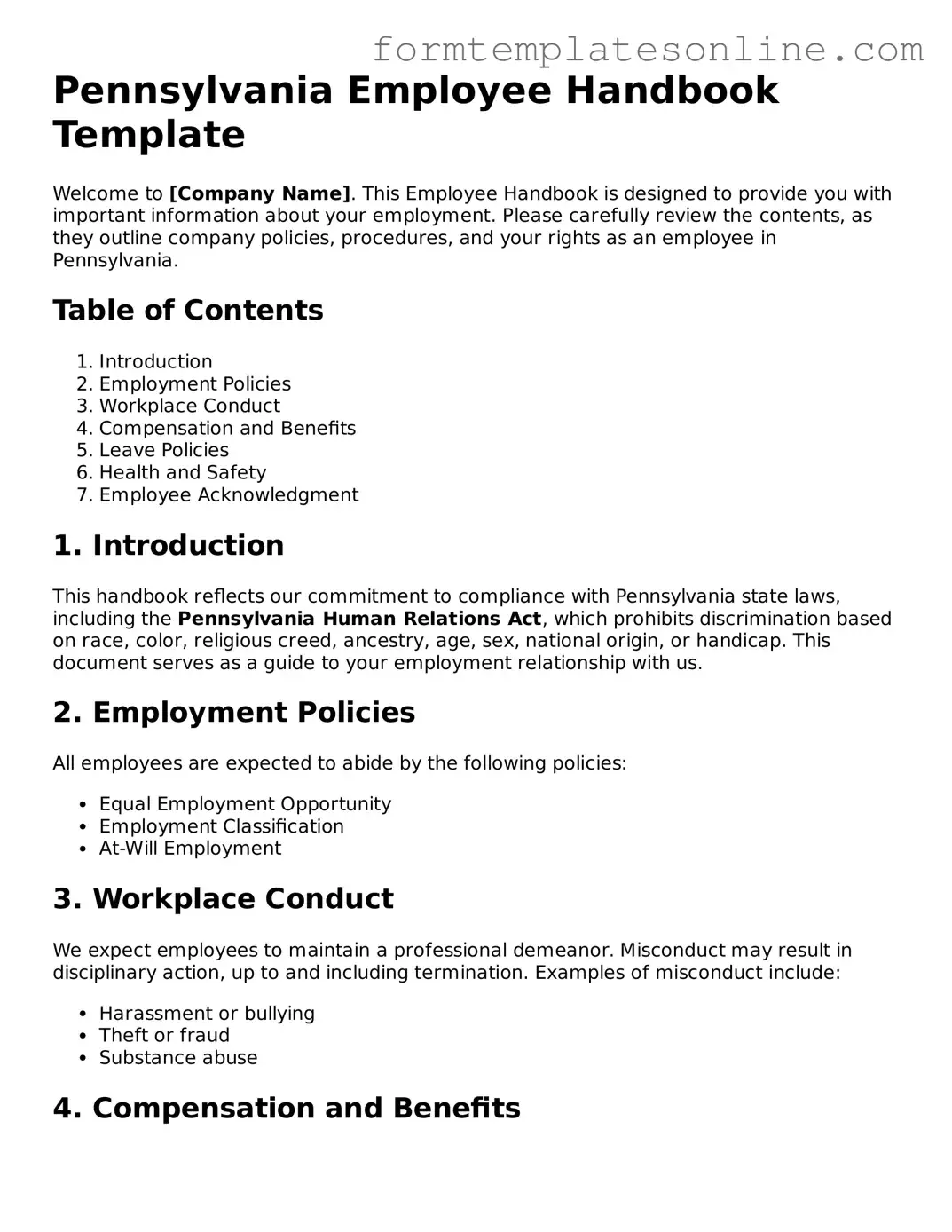Pennsylvania Employee Handbook Template
Welcome to [Company Name]. This Employee Handbook is designed to provide you with important information about your employment. Please carefully review the contents, as they outline company policies, procedures, and your rights as an employee in Pennsylvania.
Table of Contents
- Introduction
- Employment Policies
- Workplace Conduct
- Compensation and Benefits
- Leave Policies
- Health and Safety
- Employee Acknowledgment
1. Introduction
This handbook reflects our commitment to compliance with Pennsylvania state laws, including the Pennsylvania Human Relations Act, which prohibits discrimination based on race, color, religious creed, ancestry, age, sex, national origin, or handicap. This document serves as a guide to your employment relationship with us.
2. Employment Policies
All employees are expected to abide by the following policies:
- Equal Employment Opportunity
- Employment Classification
- At-Will Employment
3. Workplace Conduct
We expect employees to maintain a professional demeanor. Misconduct may result in disciplinary action, up to and including termination. Examples of misconduct include:
- Harassment or bullying
- Theft or fraud
- Substance abuse
4. Compensation and Benefits
Employees are entitled to fair compensation for their work. We comply with all federal and state wage and hour laws. Your benefits package includes:
- Health insurance
- Retirement plans
- Paid time off
5. Leave Policies
The following leave policies are adhered to in accordance with Pennsylvania law:
- Family and Medical Leave Act (FMLA)
- Pennsylvania Human Relations Act Leave
- Jury Duty Leave
6. Health and Safety
Your safety in the workplace is a priority. We comply with the Occupational Safety and Health Administration (OSHA) regulations. Employees are encouraged to report any unsafe conditions immediately.
7. Employee Acknowledgment
By signing below, you acknowledge that you have received, read, and understood the policies outlined in this Employee Handbook.
Employee Name: [Employee Name]
Date: [Date]
Signature: [Signature]
Thank you for being a part of the [Company Name] team! Together, we can create a positive and productive work environment.
